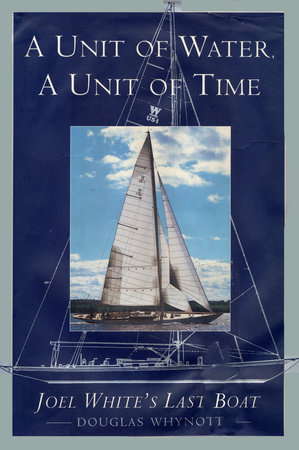An Excerpt from
Conversations with Frank Gehry
by
Barbara Isenberg
Barbara Isenberg: Do you have a favorite time when you’re working on a building?
Frank Gehry: Yes. It’s when I have the plans and the scale right for both the neighborhood and the project in block form, before I make these curved shapes, before I do anything. When I get to that point, I feel comfortable that this is where we’re going to go, and the next move is just to finish the detailing, materials and character of the shapes. It’s what I call being in the candy store, because that’s the fun part. It’s also the most scary part because it’s the unknown. I start sketching and trying things until, all of a sudden, something emerges that becomes interesting and I sort of follow it. But it’s intuitive. It’s not preconceived. I don’t have an exact plan of action, and I always feel like I’m leaping off a cliff.
BI: Do you feel like you’re taking your collaborators with you?
FG: I collaborate with people on projects because it enriches the mix and gets you somewhere else that you wouldn’t have gotten to otherwise. When it’s really working, it is like holding hands and jumping off a cliff together.
BI: Do you think perfection is possible?
FG: At the University of Southern California, they had cut in stone above the door a quote from Michelangelo which said, “A work of art is but a shadow of the divine perfection.” I like that because it got me off the hook.
BI: You may not go after perfection but you often refer to a job well done as appearing to be “a magic trick?” What do you mean by that?
FG: Magic for me is when all of the ideas, all of the thoughts, all of the time devoted to realizing a project come together and produce something the world thinks is beautiful.
BI: How often does that happen?
FG: It doesn’t happen often. We’re lucky when it happens, and we should hope for it.
BI: How do you manage to keep inspiration going ?
FG: I tell my students when you’re stuck, go to a museum. I do it myself. I’ll go to a museum and look at a painting, and that always uncorks me. I’ll always find something in the painting. I do it with literature a bit, too, and with music. Concerts make me explode with ideas. It’s just uncontrollable. Sometimes I can’t even focus on the music, I get so carried away. But the best trigger for me is going to the museum.
BI: Is it a particular artist or painting or type of art?
FG: Usually the trigger for me is looking at ancient art. Early stuff. Also, Picasso. Matisse. Rodin.
BI: We’ve talked about Carl Andre, Rauschenberg and Rembrandt Are there others who come to mind?
FG: Well, I look at a lot of work. A few years ago, when [the art historian] Irving Lavin introduced me to [fourteenth-century Flemish sculptor] Claus Sluter, I went ga-ga. When I looked at the Van der Velde sailing pictures, same thing. Orozco.
BI: You’ve named both painters and sculptors. Does sculpture have a particular attraction for you?
FG: Yes, but painting more. Sculpture is more definite. Painting is more ephemeral, so you can read more into it. You’re freer to interpret from paintings than you are from a 3-D object. You can fantasize more. It’s not that the images you’re looking at are translatable into a building; it’s the fact that the images are there and they’re so beautiful. They’re so filled with ideas. What I get out of it probably has nothing to do with the painting, except for the energy of it. Knowing that some human being got revved up and did it, revs me up to do something.
BI: Does nature do that for you, too? Looking at the ocean, looking at a mountain …
FG: All of that. Animals do, too. The shells of turtles. The fish lamps and snakes and all of that came from nature.
BI: Your creative stimuli seem to come from everywhere.
FG: They do. It comes from the people who I work with, the clients, the environment, and the hopes and aspirations of the projects I work on. I have to feel politically and socially attuned to them to respond with creative energy, to get excited, to want to do it.
BI: What about instinct?
FG: I find something and I tend to poke at it, like a cat pokes at something. I’m curious. As I said earlier, I think it’s important to learn to trust one’s instincts. I always say that if I knew in advance where I was going, I wouldn’t go there. So I’m constantly letting things just evolve in response to a problem.
BI: You’ve often talked of how you use the energy of others to fuel your own.
FG: When I was a kid, I studied jujitsu, and then, much later, karate. Jujitsu is interesting because opponents come at you, and you use their energy to overwhelm them. You take the energy that they supply to the event to contain them, and I find that’s true in creative working, too. You can sometimes turn those kinds of assaults in the working relationship to accept the challenge and then take charge of it, so to speak, using the energy of the people who are trying to mess with you.
There are two kinds of energy. There’s the energy that probably comes from my mother pushing me for many years to do something, and I guess I’m afraid to disappoint her even though she’s gone. She’s the only one I ever sent clippings to. But there’s also the energy of the work that grows out of the excitement of the project. A lot has to do with the people involved and their willingness to play with me. I think the best buildings come out of that.
BI: How do you define play?
FG: Creative play is childlike. It’s questioning. It’s fun. Well, it’s partly fun. It’s looking for something. You don’t know what. And in architecture, you’re doing it with a lot of other people.
BI: Do images and ideas come to you in dreams as well?
FG: I do have dream images but they’re not in sound sleep. They’re just before I fall asleep. When I’m thinking of a project, I’ll vividly see the answer- the building, the form. They’re very vivid pictures. I’m not totally asleep, and I can remember them the next morning.
BI: You say yes to a great many projects. Isn’t your attention split in a million directions?
FG: Working on one single project is something I’ve always found difficult. I need a little pressure and to work on lots of things at once. I get energy from working. You need a mix to bounce off. It’s like billiards. I need three or four projects at least, so that I don’t overthink one of them.
I also like the energy things give to each other. If you’re doing one thing and something happens to it– if the building department or the client decides to stop things–you’re desperate. Over the years, I’ve always tried to be doing a bunch of things so that I feel more secure. They’re not all going to go away at once.














